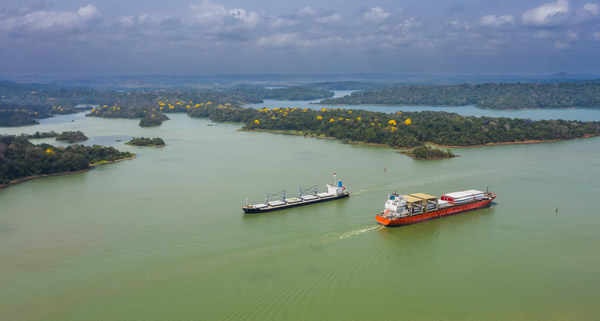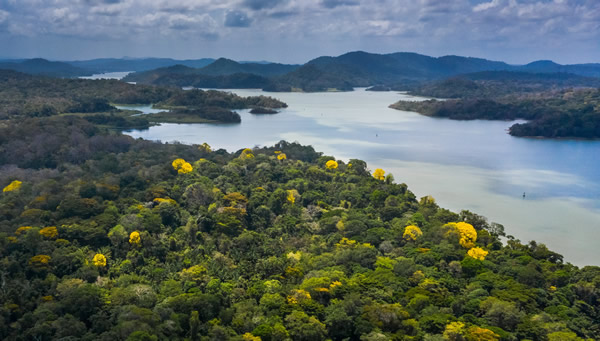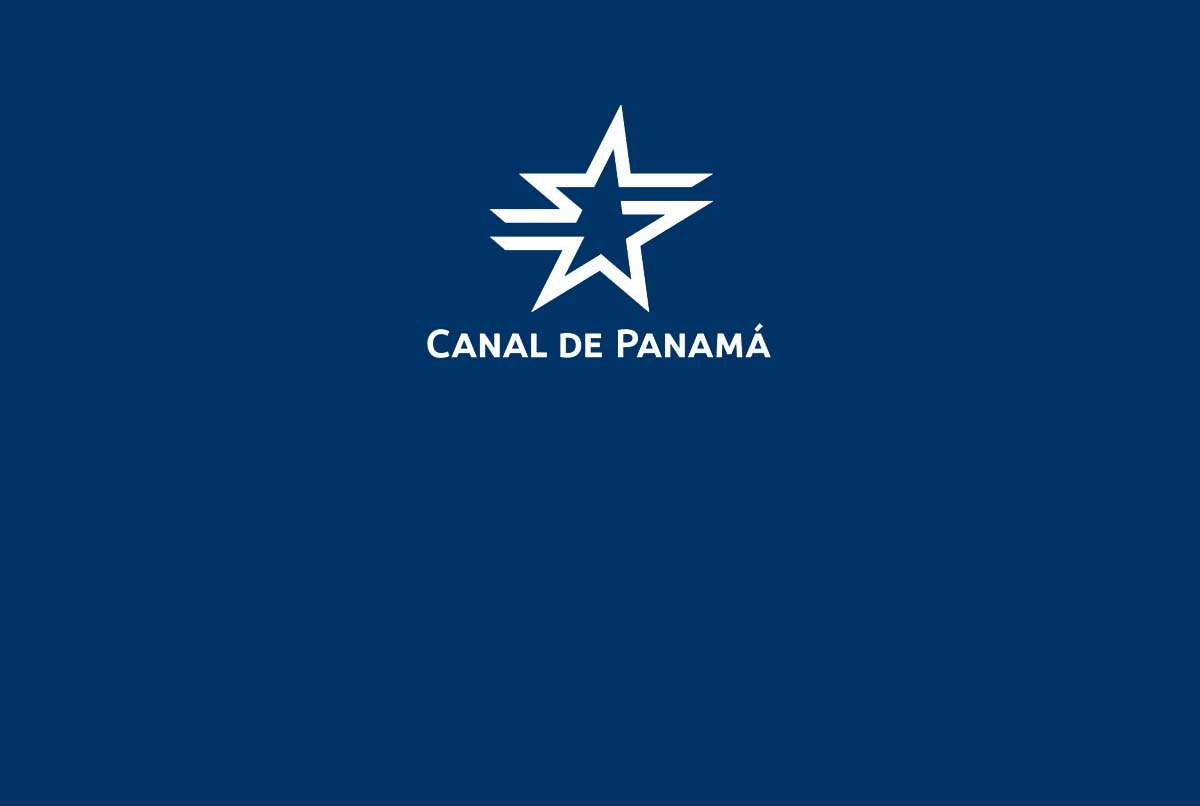The need for a sustainable supply of water at the Panama Canal has been a top priority since the Canal experienced its fifth driest year in 70 years in 2019. Since then, the Canal implemented a freshwater fee, extended water conservation measures, and made changes to its booking system. As a result of these actions, the Panama Canal now offers a maximum authorized draft of 50 feet at the Neopanamax Locks, a significant improvement from the 43-foot draft in July 2019, confirming the effectiveness of said measures.
However, there is still a critical need for the Panama Canal to adopt a long-term solution to securing its water supply for the next 50 years. Therefore, on September 7, 2020, the Panama Canal published a Request for Qualifications (RFQ) for the pre-qualification of potential offerors for the engineering, design and construction of a new water management system that will fundamentally change the way Panama handles its water resources. The Canal expects to invest up to $2 billion in this project, making it the waterway’s largest infrastructure undertaking since the Expanded Canal.

To better understand why and how the Panama Canal will approach this project, we spoke with Panama Canal’s Vice President of Water Administration, Daniel Muschett, and Vice President of Water Projects, Jose Reyes, to elaborate on the scope of this project and its long-term impact on the Canal.
Daniel Muschett
What lessons learned from previous projects and the Canal Expansion are you looking to apply to the design and construction of the new water management system?
First and foremost, the needs and livelihoods of the communities within and outside the Panama Canal watershed are of upmost importance to us. Our experience studying other watersheds across Panama to determine their potential to supply water to the Canal, as well as our track record in the engineering, design and construction of large infrastructure projects have taught us so. We also learned how to work better with our partners across government agencies, multilateral organizations and within the Canal. To that end, we can only achieve our objective to increase water availability and build capacity to manage it by engaging local communities throughout this process, so that they can benefit both economically and socially.
Can you speak to the innovative aspects of this project?
We are proud to share there are various innovative components of the new water management system. For instance, the use of information technology, such as sensors, geographic information systems, satellite mapping and data-sharing tools, will allow the Canal to obtain real-time, automated data to ensure an optimal water level for operations year-round. A lynchpin to this effort, research and development will take center stage through the newly created water research center, in partnership with the Technological University of Panama (UTP). Together, we will work to identify innovative solutions that mitigate the effects of climate change on water availability, including deployment of the latest technologies like artificial Intelligence.
We have also infused innovation throughout the project cycle to push for a more sustainable future for Panama and the global maritime industry. Specifically, we will make sure this project will drive improvements to the social and economic wellbeing of the local communities by creating jobs, improving local infrastructure, and advancing the UN Sustainable Development Goals (SDGs).
What is the Panama Canal already doing to conserve water and protect the environment?
The Panama Canal continues to implement measures that conserve water in its operations such as cross-filling lockages, a technique that sends water during transits between the two lanes at the Panamax Locks and already saves the same amount of water used in six lockages each day. Other ongoing measures include the closure of the Gatun hydropower station, elimination of hydraulic assist at the Panamax Locks, use of tandem lockages (two ships in one lockage, whenever possible) and use of water-saving basins at the Neopanamax Locks. The Canal also implemented a series of water measures in February 2020, such as a freshwater fee, a common industry response to low water levels. Together, these efforts have allowed the Canal to secure a steady draft increase after less than three months of implementation.
The Canal also continued its seasonal measures to protect the migratory paths of whales, dolphins and other large aquatic animals in accordance with the International Maritime Organization (IMO). From August 1 – November 30, 2020, ships must stay within designated navigation areas known as Traffic Separation Schemes (TSS), which decrease the overlap between vessels entering or exiting the Canal and migrating whales.

Jose Reyes
Why is this project different from previous capital investments at the Canal?
This water management system is different from other major investments because the final outcome will not simply be a piece of infrastructure, but a system that will change how Panama manages its water resources. We are the fifth rainiest country, tied with Costa Rica, and have an opportunity to revolutionize how we think of the future and the control we have over our water sources—from facilitating global trade to providing clean drinking water. This system will afford us an optimal level of water in our navigational channels year-round, which will be even more important as trade patterns continue to change due to the coronavirus.
This project will also be critical to Panama’s economic recovery from the coronavirus. Though there is no certainty as to how many jobs it will bring just yet, this project will span several years and require many hands-on deck.
Why is water quantity, quality and control a key outcome of the project?
Water is our main priority. We need to guarantee an operational level of water 24/7 and 365 days a year, and secure enough supply for human consumption. An integrated water management system will allow the Canal to have control over the water levels at the Gatun Lake during any season. In order to gain this amount of control, the system will also need to have the necessary technology to properly forecast water levels and effectively control water flow to our navigational channel to ensure sustained operations. To manage water quantity, this new system will improve our water storage capacity, which is especially important when droughts occur, like we saw in 2019. Last but not least, quality is key to this project as we need to ensure that water quality is kept according to standards for drinking water and salinity levels are sufficient for human consumption and optimal for transit operations.
Can you elaborate on the engineering concept of the project?
We have envisioned a few scenarios for this system over the past few years, from segmenting the Gatun Lake for a reservoir to a pipeline that draws water from a lake with higher water levels to the Canal. Ultimately, there is no simple answer or single project that will solve the ever-changing environmental and business challenges impacting the Canal, so we are focused on implementing an integrated system.
The conceptualization of the project will be known once we chose the most qualified firm through the RFQ process. We aim to short-list the most-qualified firms by the end of the year, inviting each to submit their best value proposals for a portfolio of water management projects at the waterway.
Why should companies take part in this project and participate in the RFQ process?
Los licitadores con conciencia social y ambiental deberían considerar postularse para este proyecto único que dejará, sin dudas, un impacto en el comercio mundial y en Panamá durante muchos años por venir.
Socially and environmentally conscious bidders should consider applying for this once-in-a-lifetime project that will undoubtedly leave an impact on global trade and Panama for many years to come.
For more information, please visit:
https://apps.pancanal.com/sli/LicitacionesBusqueda/Welcome
About the Panama Canal
The Panama Canal Authority is an autonomous legal entity of the Republic of Panama in charge of the operation, administration, management, preservation, maintenance, and modernization of the Panama Canal, as well as its activities and related services, so that the Canal may operate in a safe, continuous, efficient manner. For more information, please refer to the Canal’s website: https://www.pancanal.com or follow us on Twitter @thepanamacanal.



